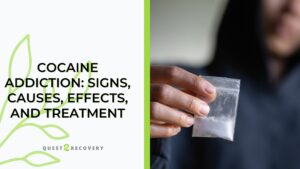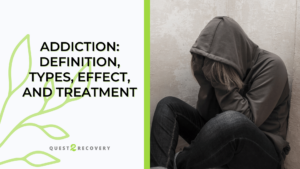Taking that initial step toward freedom from an alcohol use disorder is a game changer. The fact that you are considering taking that step indicates your commitment to changing your life for the better by getting sober and learning to live without booze.
Admittedly, this first step is dreaded by all who contemplate it—detox’s reputation for producing dreadful withdrawal symptoms preceding it. The brave souls who have conquered that first benchmark in recovery have lived to tell the tale. But no matter how much discomfort is experienced during the steps to detox from alcohol, that pales in comparison to the future declines in health and wellbeing, and the mounting losses of everything valued if alcohol abuse is continued.
Once you have wrapped your head around the detox and withdrawal hurdle that lies ahead, it helps to have a basic understanding of what the alcohol detox process entails. Although the basic steps to detox from alcohol are fairly consistent and predictable, the severity of the withdrawal symptoms will correlate with the history and acuity of the alcohol addiction.
What Happens During Detox?
Alcohol abuse can take a devastating toll on the body and the brain. Over time it sets up a physiological state where the brain no longer produces dopamine after consistent consumption of alcohol has altered brain chemistry over a prolonged period. When someone who has a history of heavy alcohol use attempts to quit drinking, the body reacts within hours, producing very unpleasant physical and psychological withdrawal symptoms.
Detoxification involves purging the toxins associated with the alcohol from the body, allowing the individual to stabilize over a period of a week to ten days. Because addiction treatment will follow detox, it is necessary to begin the treatment with a clear head so the recovery tools and therapeutic process can be absorbed. Detox can help set the stage for the therapy to sink in and resonate.
During the detox phase, the body goes through three distinct stages as it rids itself of the toxins and chemicals related to alcohol. Various factors, such as length of alcohol addiction, amount of alcohol regularly consumed, genetics, age, general health, and the existence of a co-occurring mental health disorder all influence the severity of the withdrawal symptoms.
Alcohol withdrawal symptoms can include:
- Anxiety
- Insomnia
- Abdominal pain
- Vomiting
- Diarrhea
- Tremors
- Mood swings
- Foggy thinking and mental confusion
- Irritability
- Increased blood pressure, heart rate, and body temperature
- Agitation
- Depression
- Agitation
- Seizure
Why Can Alcohol Detox Be Dangerous?
It is always recommended that alcohol detox and withdrawal be undergone at a dedicated facility with a detox clinician and nurse available. Attempting to go through alcohol detox alone at home is misguided and potentially dangerous, as serious withdrawal symptoms can suddenly emerge, constituting a medical emergency that can result in death.
In a relatively small number of individuals undergoing alcohol detox a serious medical complication can emerge on days 3-4 of detox, called delirium tremens (DTs). According statistics provided by the New England journal of Medicine, the DTs occur in 3%-5% of individuals going through detoxification. The DTs come on rapidly and without warning and can lead to hallucinations, psychosis, grand mal convulsions, and severe confusion.
With a medically monitored detox, the individual will be guided through the process and offered various medications and interventions to minimize discomfort. Any withdrawal symptoms that appear to be escalating will be treated swiftly and appropriately. Detox specialists also provide the important emotional support that helps encourage them to stay the course when they may consider giving up.
What are the Steps to Detox From Alcohol?
Alcohol detox begins with evaluation and assessment of the degree of an individual’s alcohol use disorder, and then segues into stabilization during the 5-10 days of detox when withdrawal symptoms cause physical and mental distress. Although the severity will differ, the detox process follows a predictable pattern of three stages:
Stage 1: Withdrawal symptoms commence about 6-8 hours after the last drink. During this stage fatigue, heart palpitations, nausea and vomiting, tremors, foggy thinking, and anxiety are common.
Stage 2: This stage occurs 1-3 days after the last alcoholic beverage. During this stage symptoms of irregular heart rate, mental confusion, profuse sweating, irritability, mood disturbances, increased blood pressure and respiration, and fever emerge.
Stage 3: This stage can occur between 3-7 days after the last alcoholic drink. During this stage many of the symptoms in stage 2 will begin to subside, however serious complications can occur, including serious psychological effects or the sudden occurrence of the DTs.
During the medical detox, medications will be provided to ease symptoms of gastrointestinal distress, anxiety, insomnia, and fever.
What is PAWS?
Post-acute withdrawal symptoms (PAWS) are the lingering physical, psychological symptoms or mood disorders that can follow the initial detox and withdrawal process in individuals who have a long history of heavy alcohol abuse. PAWS symptoms can last anywhere from a few weeks to several months after undergoing treatment for alcohol dependency, but will eventually subside. PAWS can include such symptoms as:
- Tremors
- Depression and anxiety
- Intense craving
- Lingering rapid heart rate, sweating, and nausea
Why Detox is Not Enough
As important as detox is to launching recovery, it is not a stand-alone treatment for addiction. Detox sets up the mind and body for active participation in the therapy that will follow, during which new behavior responses will be learned to help manage triggers or stressors. Treatment programs for alcohol addiction can be as short as one month and may last up to 6-12 months depending on the severity of the alcohol dependence.
Without participating in active treatment the disordered thought patterns that drive addictive behaviors will not have been changed. As soon as the individual confronts a trigger, they will likely relapse into drinking without any new coping skills or stress management techniques to draw upon. Detox and withdrawal are the first necessary step in addiction recovery, but certainly not the last.
Quest 2 Recovery Offers Medical Detox for Alcohol Dependency
Quest 2 Recovery is a holistically oriented drug and alcohol treatment center located in Los Angeles County. Carefully guiding clients through the steps to detox from alcohol in a medically supervised setting, our detox specialists will ensure the highest degree of comfort and support. The family style addiction treatment program that follows detox is evidence-based, compassionate, and highly effective. For more information about beating alcohol addiction, contact Quest 2 Recovery today at (888) 453-9396.









